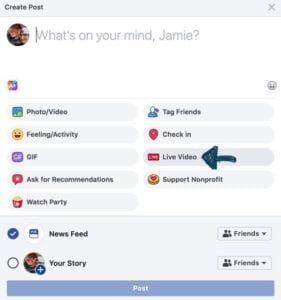“Content marketing is simply the act of teaching and problem-solving so as to earn buyer trust.”
But what happens when the content well runs dry? You’ve answered all your clients’ questions and new clients keep asking the same ones.
Well, first, hurrah for you because you’ve created a stockpile of content so good you are saving yourself hours each week by sending prospects to your blog page (instead of laboriously answering the same questions by email).
It’s also true though, a marketer’s work is never done. You need to keep creating content.
But what do you create?
Make a list of questions your clients need to be asking.
As our friend Jason Blumer says, “Answer their problems and solve their wants.” Your clients ask the surface questions they think need answering. But sometimes they haven’t figured out the root problem- the question behind the question. That’s your job to identify. If you’ve been in the industry for a while, you’ve gotten pretty good at knowing what’s behind that first question.
Similar to your TAYA team brainstorm session, gather your team and come up with a list of questions you wish your clients would ask you. Write down all the “questions behind the questions.”
Outline how you would answer those questions.
This can be done on a simple Gsheet – one column for questions and another for answers.
Assign blog writing and posting to your team in a marketing calendar.
Then create your marketing calendar so you know what is being posted and when. This can be done using a G-sheet as above or a calendar that has each piece of content planned out on a specific date.
Having the brainstorming session and coming up with solutions together is a great way to nudge your team members into participating in marketing if they aren’t already. If you need some more tips on getting your team involved, check out our blog here.
Use your social channels to ask new questions.
At its root, social media is inherently meant to be (drum roll please)… social. Most people genuinely like being social, especially on digital platforms. They like to be helpful and they love to share their opinions. Use it to your advantage.
Identify which social platforms you get the most engagement on (read more about that here) and ask your followers one of these questions.
- What’s something you’ve always wanted to ask your accountant but never have?
- What’s one thing you wish you knew about your business finances 1 year ago?
- Name one thing your accountant has helped you understand about your business.
- What question do you wish your accountant would ask you?
Your unique style and tone of voice enforces your brand, so don’t be afraid to tweak this questions to sound more like you.
These questions will get people talking. You’ll be able to gather this information and use it to create more custom content that’s tailored to your specific audience.
Host a Facebook live session.
In the interest of your clients’ busy schedule, post to Facebook 1 week, 3 days, and 1 day before you plan to go live. Let them know what day and time (include the time zone) you’ll be live and that you are hosting an “Ask the Accountant” or “Ask a Bookkeeper” live session where they can ask any question they’d like.
On the day of the event, click on your “Live video” button on Facebook, accept microphone permissions, and click “Go Live.” You’ll then be hosting a live session where users can type in their questions and you’ll be able to answer them as you go.
Have an additional team member or person on hand that can also record these questions so you can use them for later content.
What if no one shows up? Or what if people are watching but it’s radio silence?
Don’t. Panic.
Take time ahead of the session to make note of several questions you’ve been asked in the past and your answers to those questions. That way you’ll have a running stream of things to talk about until someone asks a question or you decide to end the live session.
Host a Zoom webinar.
If you like something a little more structured than Facebook live, you ask people to sign up for an “Ask the Accountant” style webinar. Here’s a fabulous step-by-step on setting up and hosting your webinar on Zoom.
Getting people to a webinar can be tough. Make sure to use your email and social media channels to get the word out. You’ll be given the ability to “copy the invitation” in Zoom. Create an email campaign to send out to your current clients inviting them to the event. If you don’t have email campaign software, you can read more about it here. You can also copy and paste the invitation into whatever you use for email (Gmail, Outlook, etc) and send invitations this way.
On the day of the webinar, have an additional team member on hand to make note of all the questions. Zoom will also give you a copy of the text file from your recording.
The recording of your webinar is just as valuable (if not moreso) that the live session. Content lives on forever and you can repurpose in all kinds of ways for social media, your website, or YouTube/Vimeo channel. At PF we constantly have accountants telling us they’ve watched a webinar from years ago.
Make a list of topics that are not necessarily related to finance or accounting.
This is helpful if you’ve gotten stuck in the TAYA (They Ask, You Answer) box. While TAYA is a great way to create content, sometimes we get caught thinking so much about the problems in the business that we forget about the business owner. Branching out of the accounting and finance topics and into things that are related to your clients’ industry is a great way to show you are involved in the industry in a broad way- that you care about the industry as a whole and not just about the money.
We have a client who works with veterinarians. He’s spent a lot of time building out his content based on the Big 5 of TAYA and has gotten some great results in terms of traffic to his website and being able to share that content with prospects. Recently we had a conversation about how he could write about mental health in the vet industry (as it has one of the highest suicide rates of any profession). We chatted about how this topic is one that’s critical for vets to have on their radar and it directly impacts their business, which in turn directly impacts their finances.
Our client has decided to invest in this topic by speaking with another vet that has done some work in this area. He’ll create a piece of content that he can share with the broader vet audience via his blog and social media channels.
Share client victories.
In Building a Story Brand, Donald Miller talks about how every story in history follows a pattern. There is a hero who has a problem. The hero meets a guide who helps them with the problem and leads them to victory or failure -(in which case they weren’t a very good guide, eh?)
Your client is the hero and you are the guide. When they’ve experienced a victory ask them about it. Then create a testimonial quote or case study to use on your social channels and blog. Use the tips outlined here to gather testimonials.
Share about your life and personal experiences.
You might think your life is boring and not very “Insta-worthy” but come on, there are 639K posts on Instagram with the hashtag “catmemes.”
You definitely have something worth sharing.
Kier (one of our CMM’s) wrote a great blog on this very topic. He talks about the fear that you might be boring or unprofessional among other concerns. He also lays out some excellent guidelines to get you more comfortable with sharing the more personal side of things- even if it’s just what you had for dinner.
Sometimes you’ll even be able to tie in your personal life with something that relates to your industry like Alexis from Cerebral Tax Advisors did in her post about going on a Disney cruise with her family.
Content marketing is as much a formula as it is an art form.
You’ll do a lot of trial and error to see what sticks.
When you run out of ideas, you don’t stop marketing, you take the time to brainstorm and think of new ways to reach your audience. If you’ve been doing marketing for a while and are feeling stuck, sign up for a custom marketing planning workshop. We’ll work with you to create a whole list of ideas so you can keep creating content. Not just any content, either: world class content which is very appealing to your specific audience!




